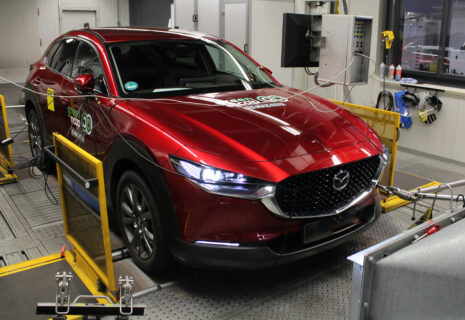MAZDA CX-30 e-Skyactiv G140 petrol FWD automatic
Sustainability rating
2025
44%
7.0
10
Clean Air
4.4
10
Energy Efficiency
1.8
10
Greenhouse Gases
Specifications
- Vehicle class Small SUV
- Power/Torque 103 kW/238 Nm
- Engine size 2,488 cc
- Declared consumption 6.6 l/100 km
- Declared CO2 148 g/km
- Mass 1,462 kg
- Heating concept Waste heat
- Tyres 215/55 R18
- Emissions class Euro 6 EA
- Tested car JMZDM6WM90051XXXX
- Publication date 09 2025
Show less
Show more
Driving Experience
Consumption & Range
adequate
Cold Winter Performance
not applicable
Charging Capability
not applicable
Green NCAP comments
The Driving Experience evaluation of conventional vehicles focuses only on the performance in section 'Consumption and Range'. Although at the upper end of the evaluation range, the Mazda CX-30's estimated real-world consumption figures are still largely seen as adequate in most conditions – warm weather and cold winter, urban, rural, highway and mixed driving scenarios. The consumption readings on the board computer display are accurate.



Our verdict
The tested Mazda CX-30 is equipped with a petrol engine and a low-level hybridisation. The vehicle scores well in the Clean Air part of the assessment, but loses points for Energy Efficiency and is significantly challenged within the Greenhouse Gas Index.